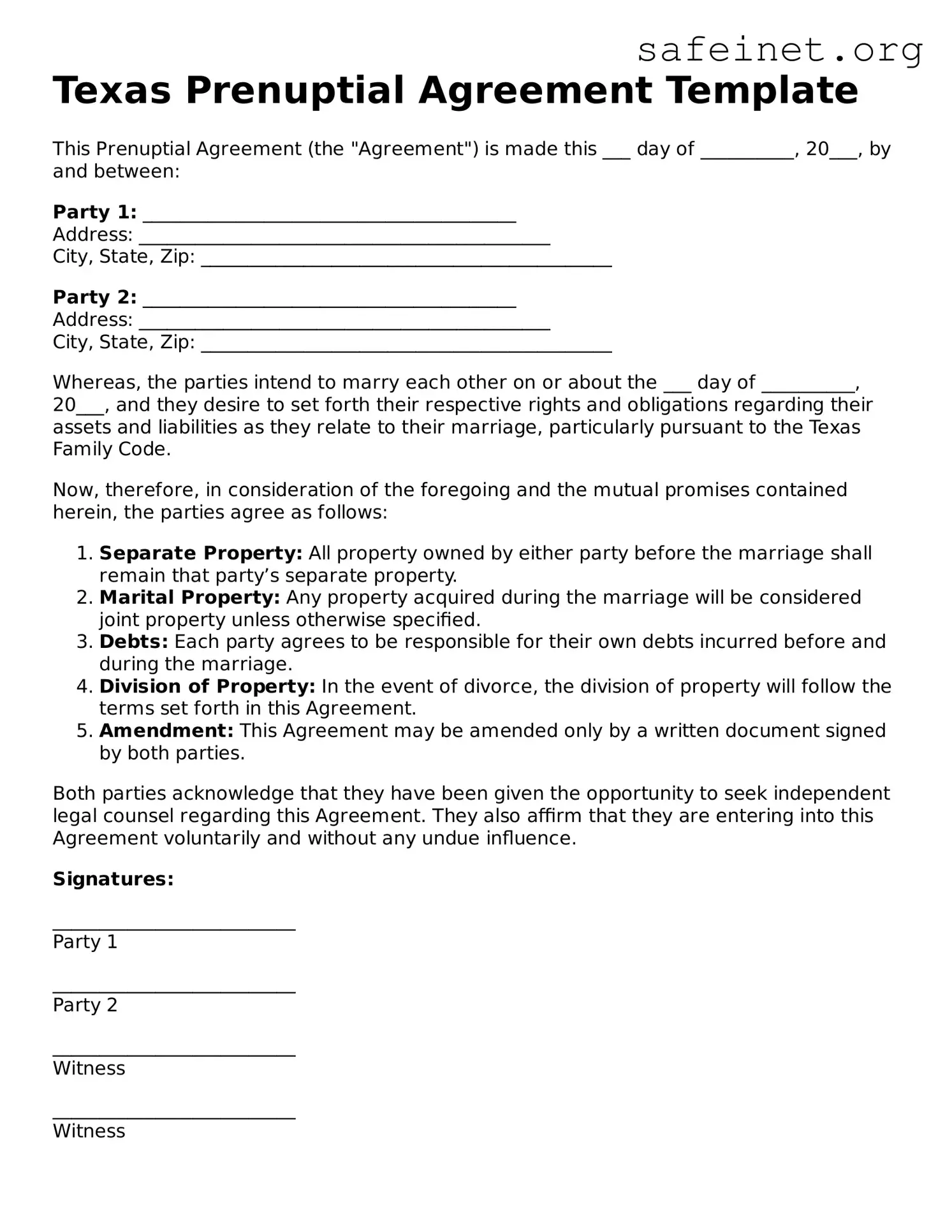Texas Prenuptial Agreement Template
This Prenuptial Agreement (the "Agreement") is made this ___ day of __________, 20___, by and between:
Party 1: ________________________________________
Address: ____________________________________________
City, State, Zip: ____________________________________________
Party 2: ________________________________________
Address: ____________________________________________
City, State, Zip: ____________________________________________
Whereas, the parties intend to marry each other on or about the ___ day of __________, 20___, and they desire to set forth their respective rights and obligations regarding their assets and liabilities as they relate to their marriage, particularly pursuant to the Texas Family Code.
Now, therefore, in consideration of the foregoing and the mutual promises contained herein, the parties agree as follows:
- Separate Property: All property owned by either party before the marriage shall remain that party’s separate property.
- Marital Property: Any property acquired during the marriage will be considered joint property unless otherwise specified.
- Debts: Each party agrees to be responsible for their own debts incurred before and during the marriage.
- Division of Property: In the event of divorce, the division of property will follow the terms set forth in this Agreement.
- Amendment: This Agreement may be amended only by a written document signed by both parties.
Both parties acknowledge that they have been given the opportunity to seek independent legal counsel regarding this Agreement. They also affirm that they are entering into this Agreement voluntarily and without any undue influence.
Signatures:
__________________________
Party 1
__________________________
Party 2
__________________________
Witness
__________________________
Witness
